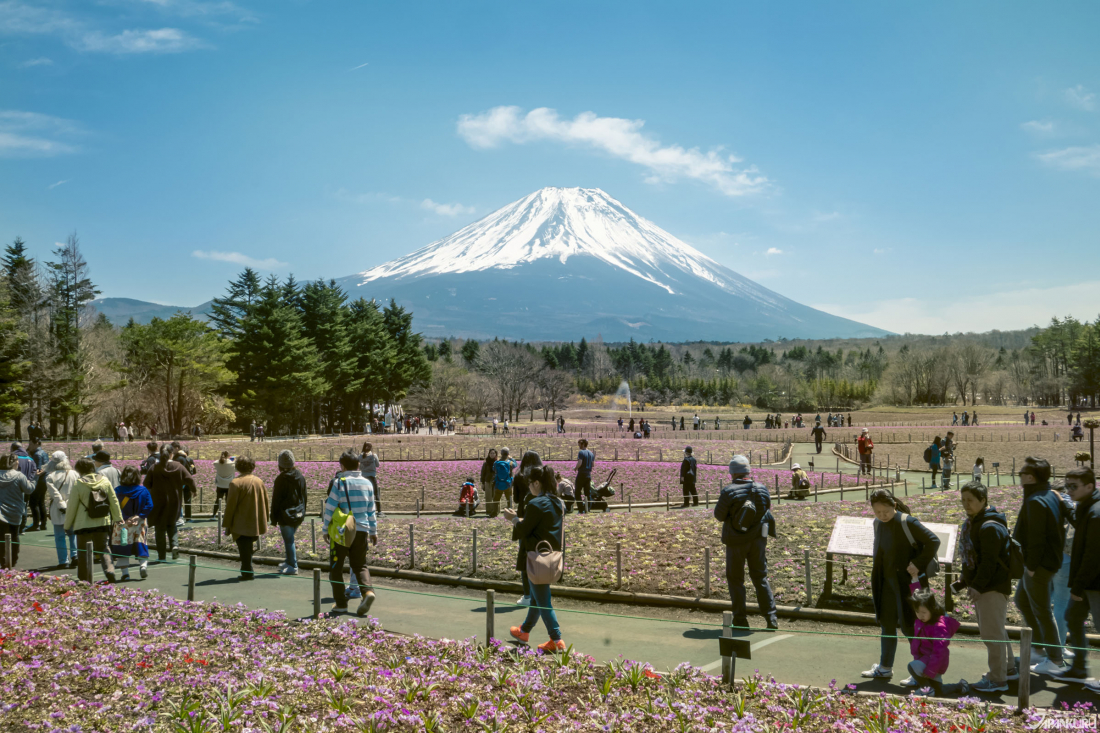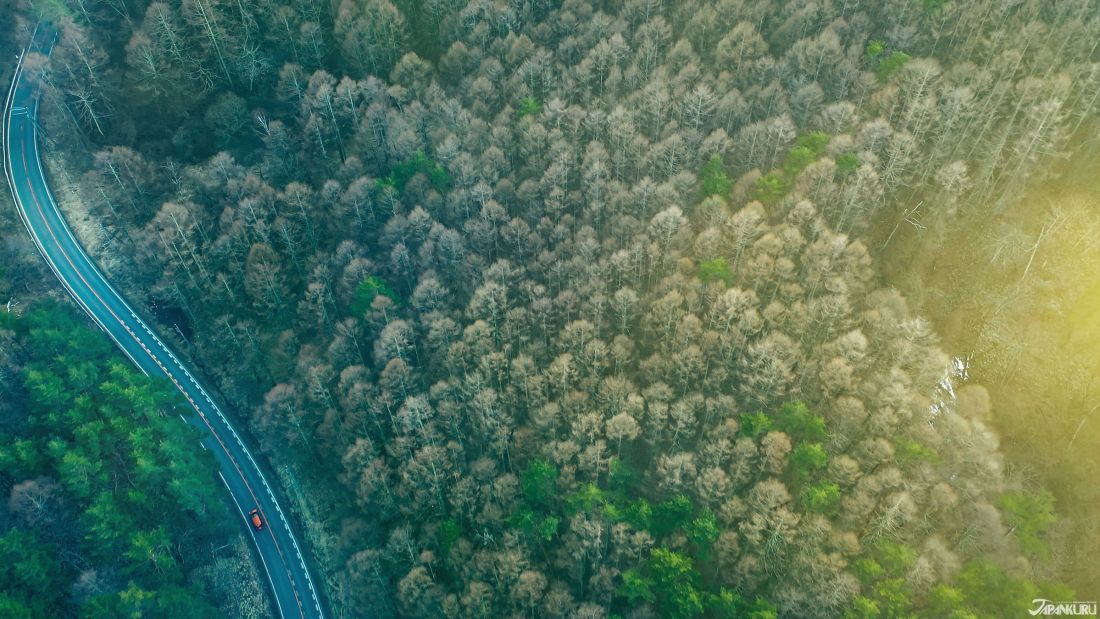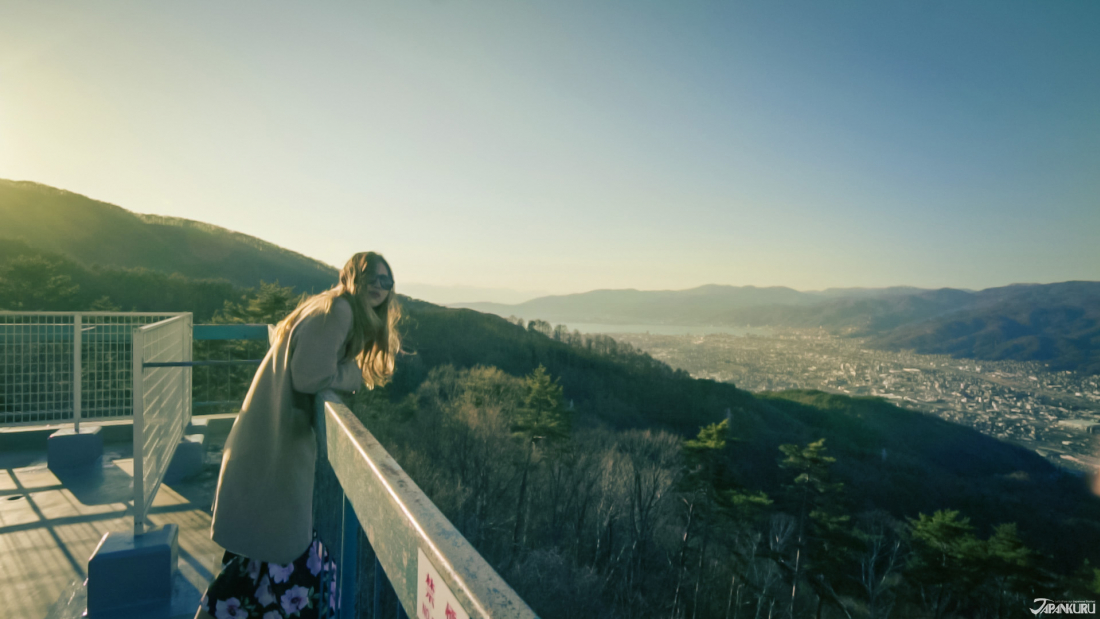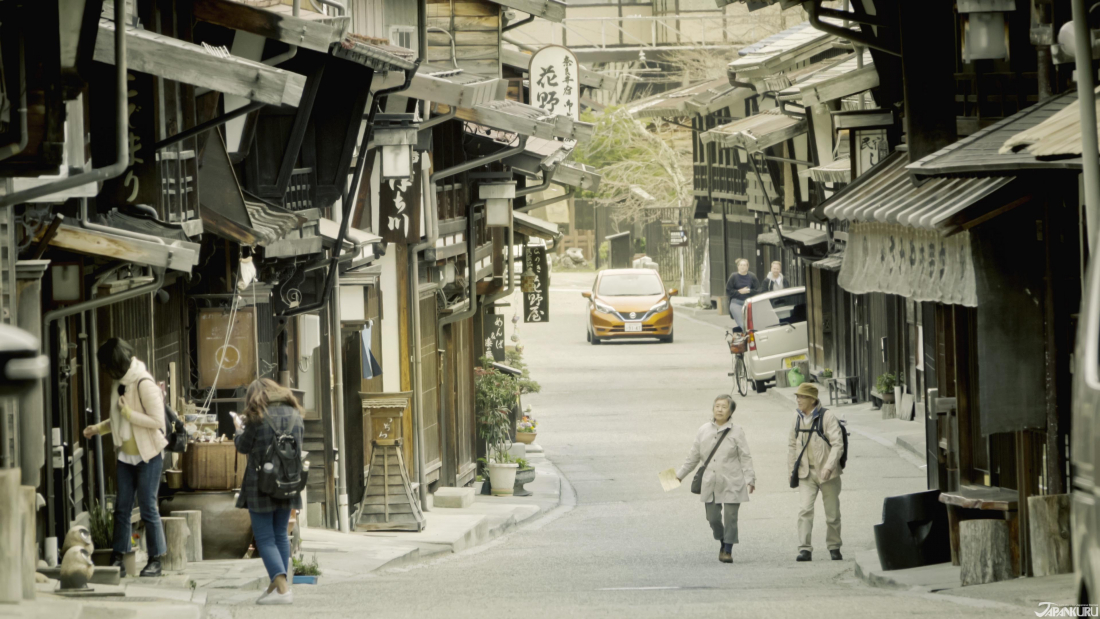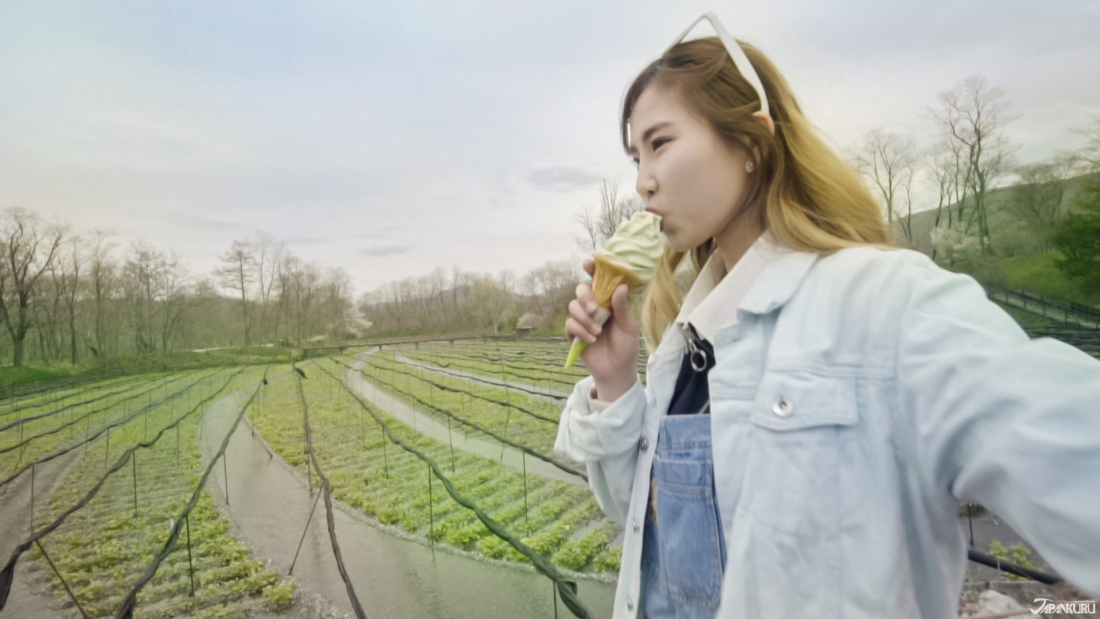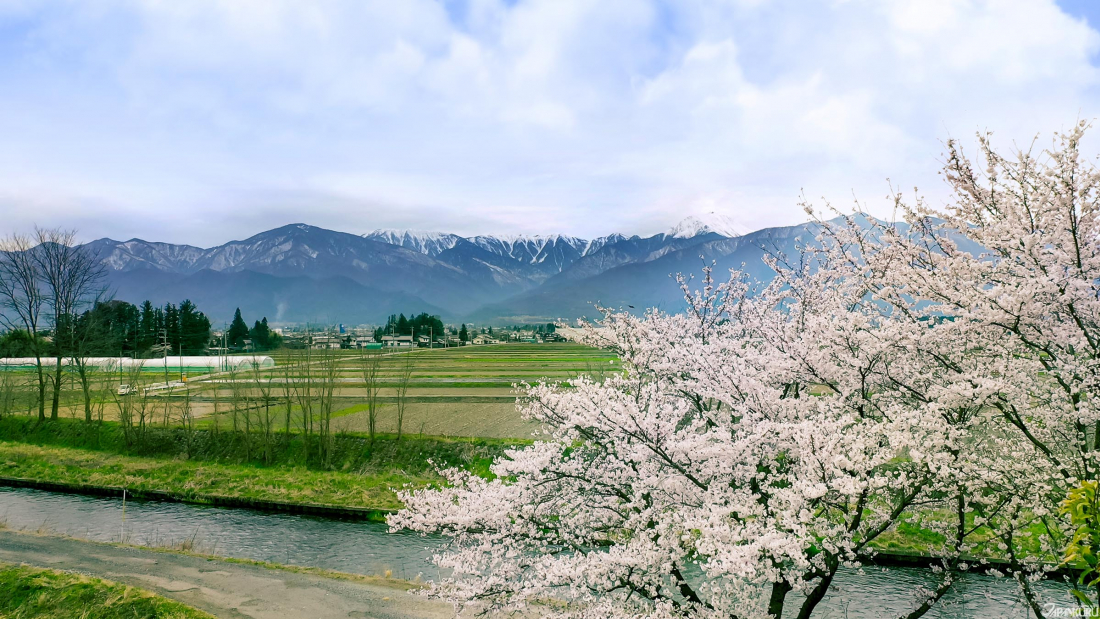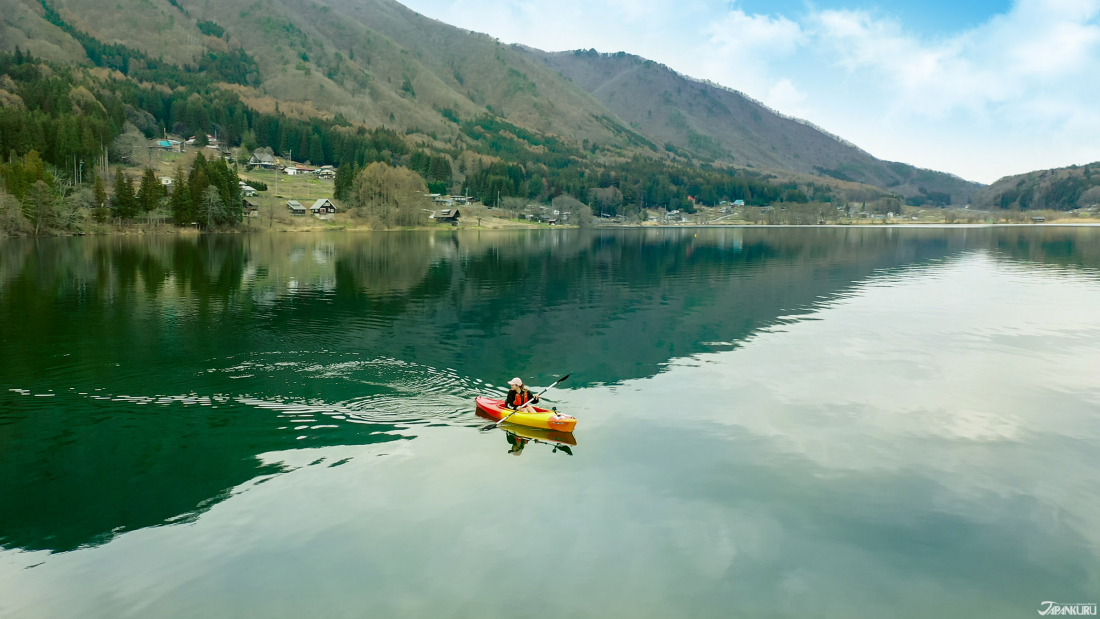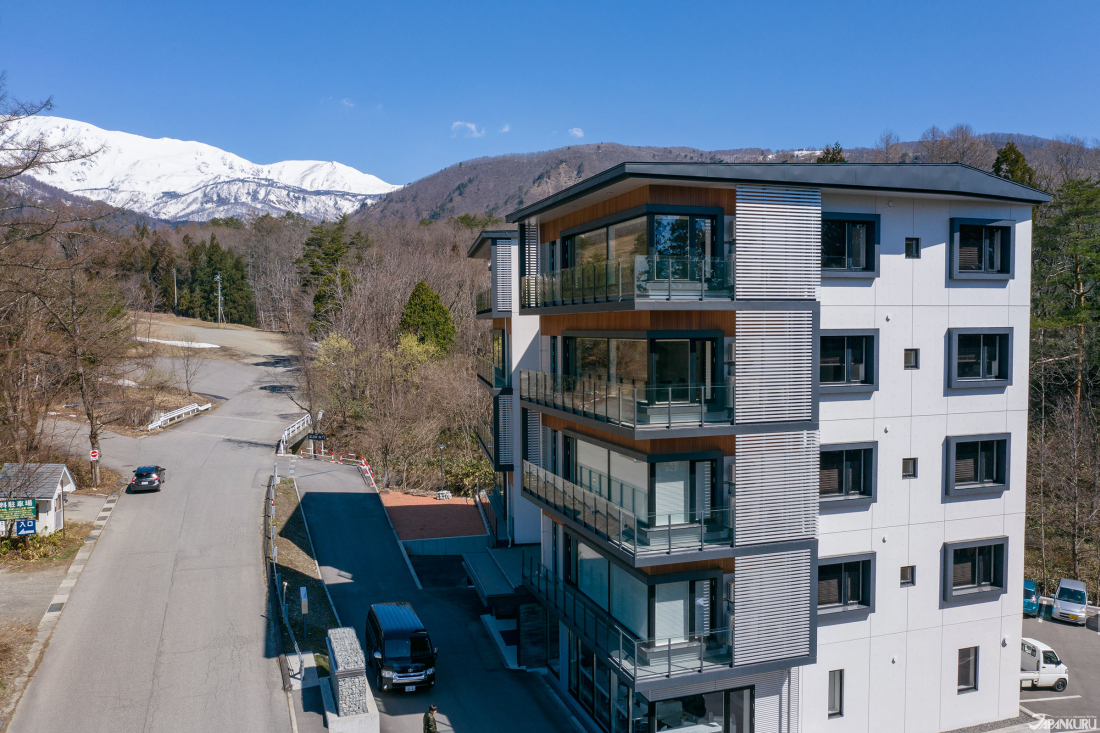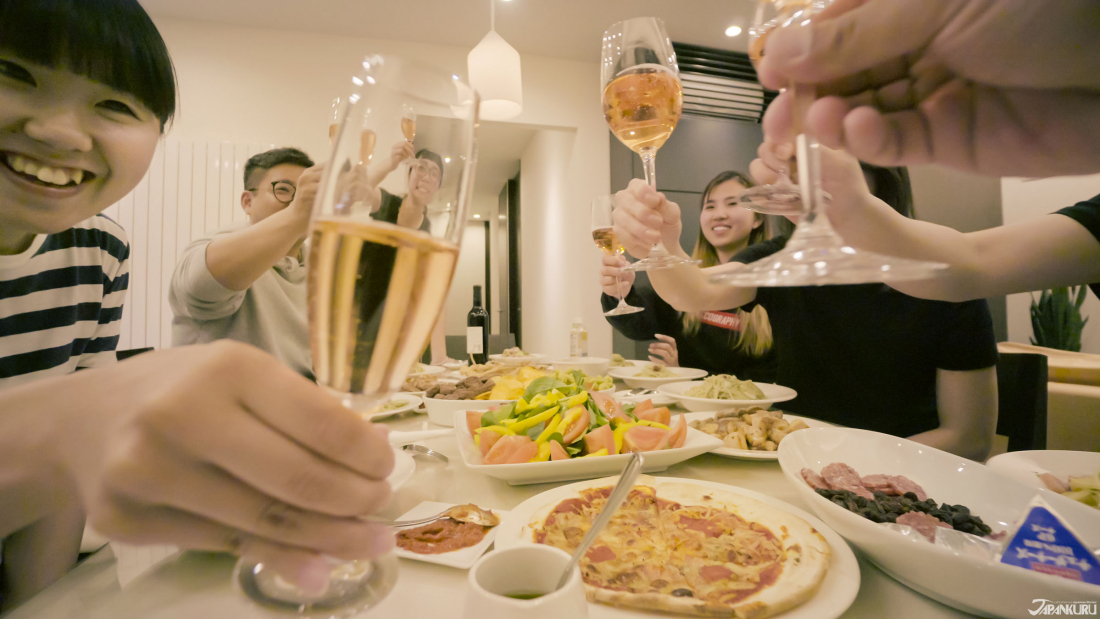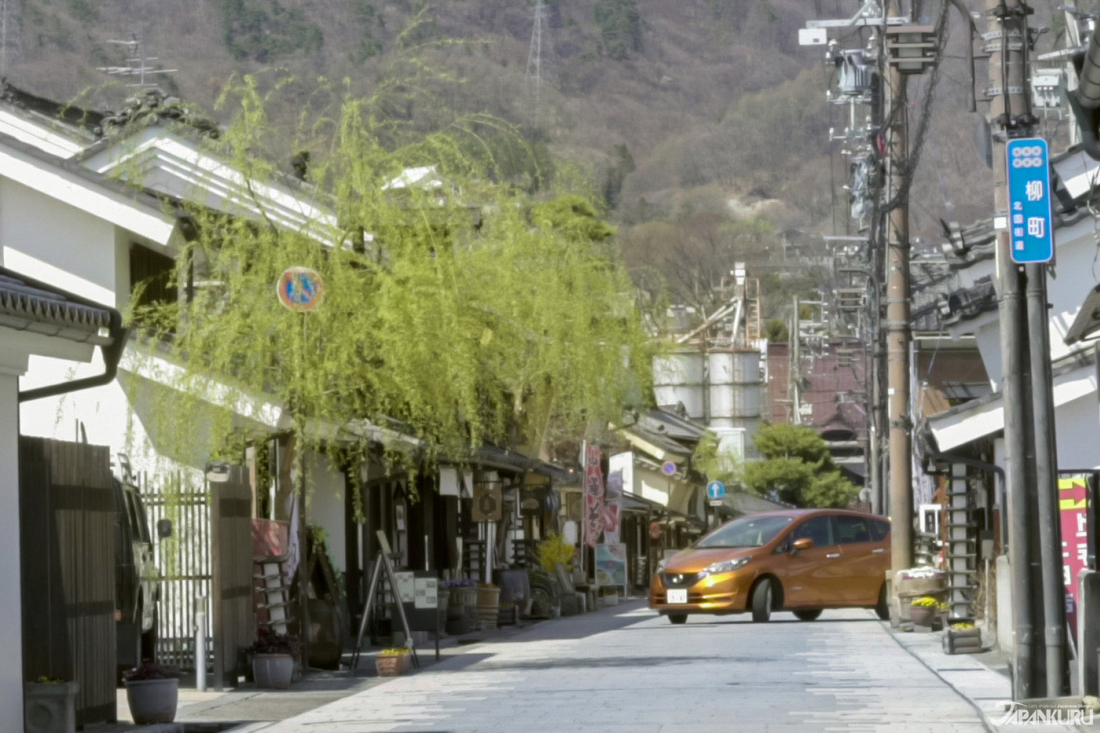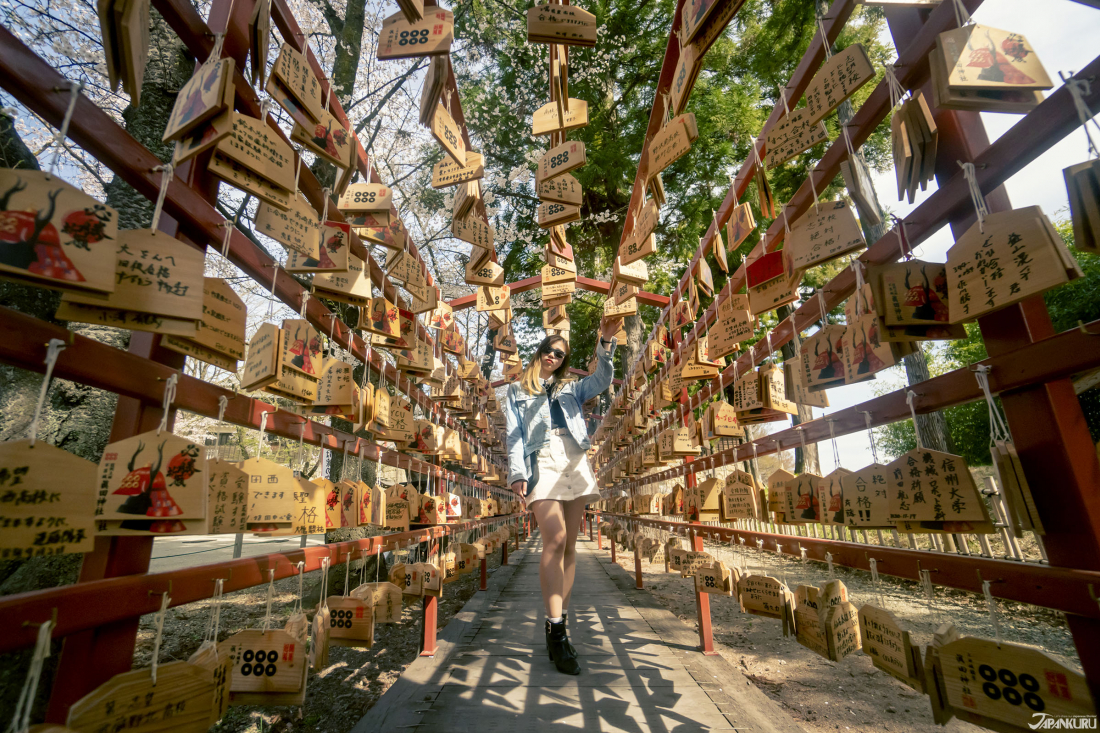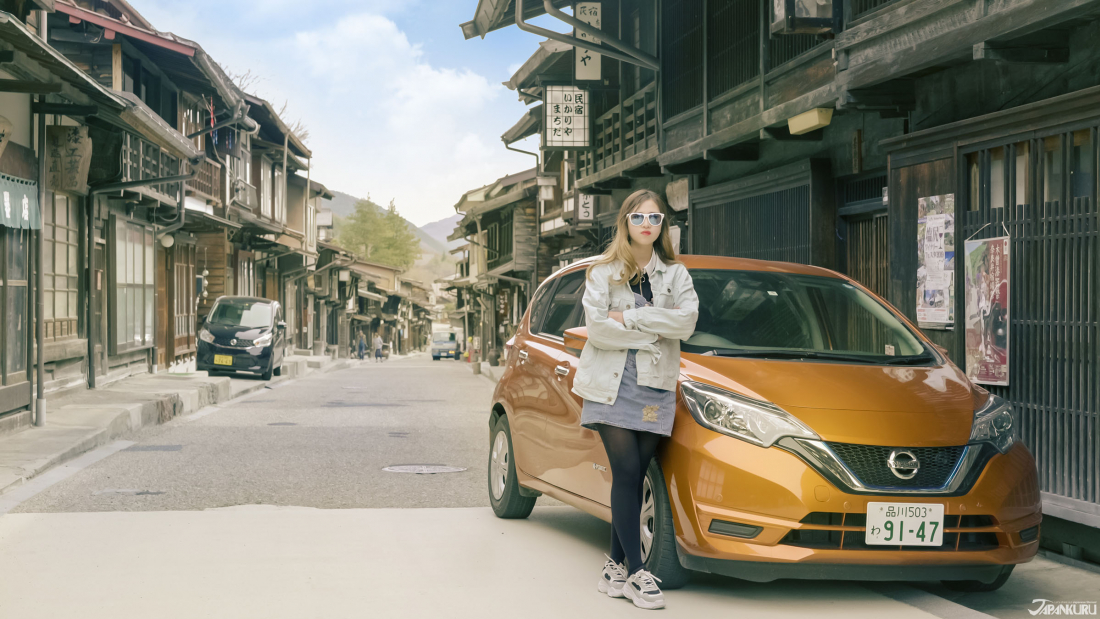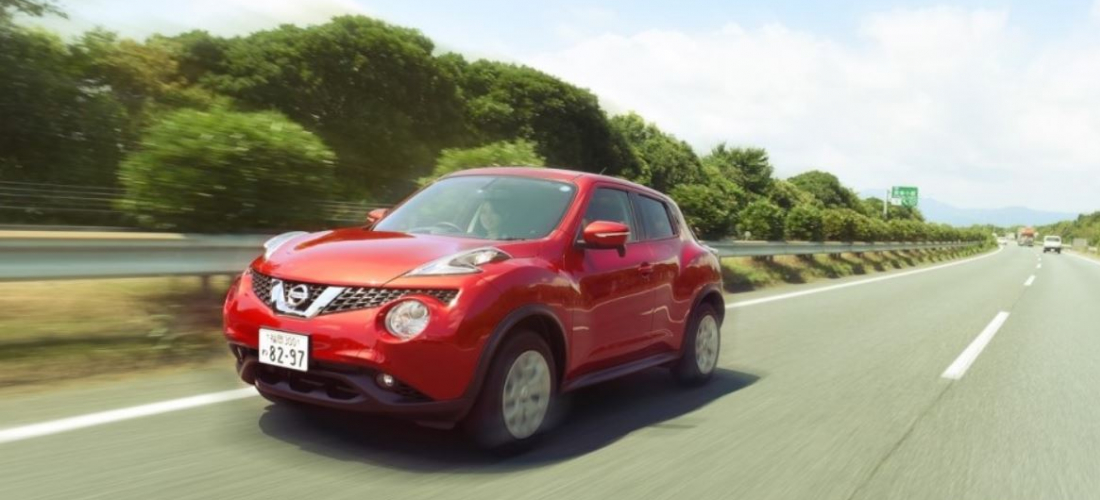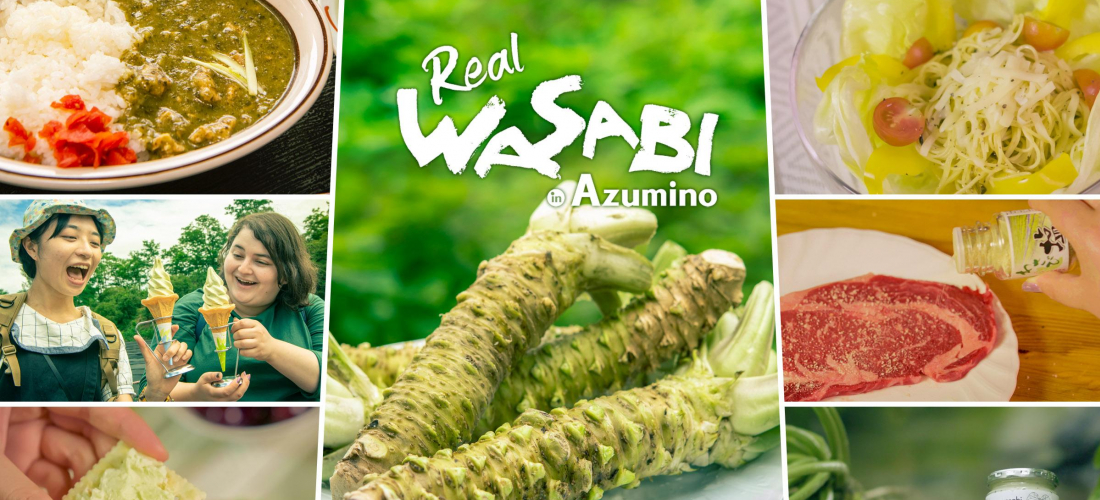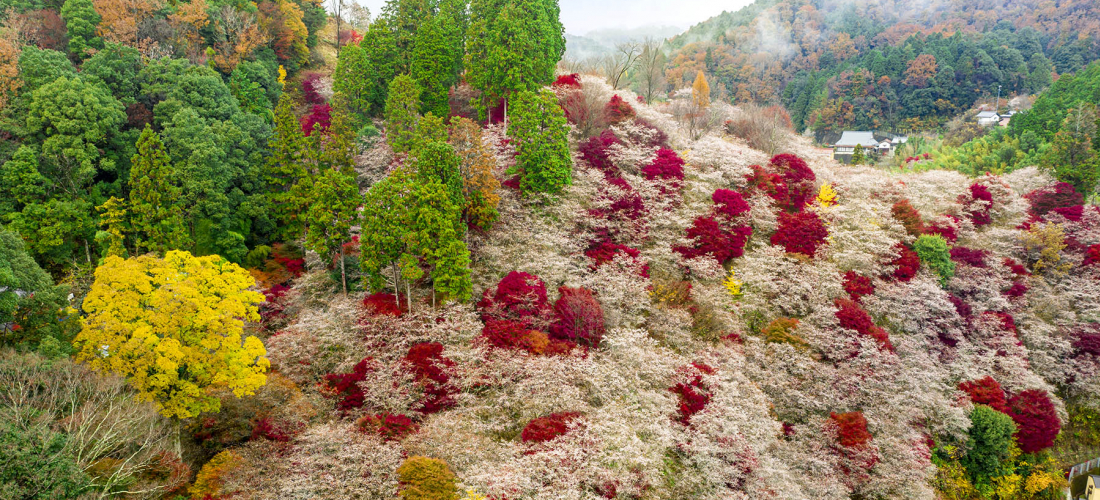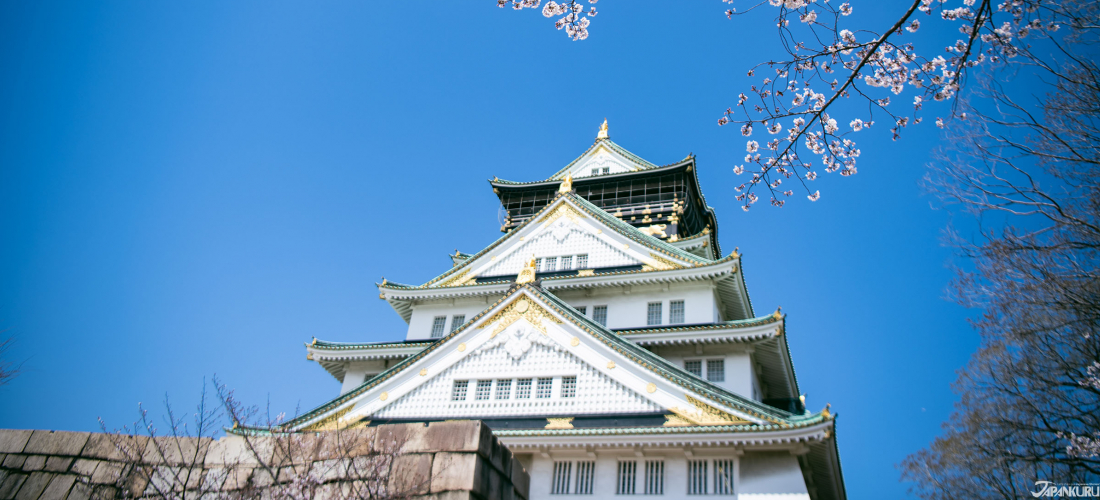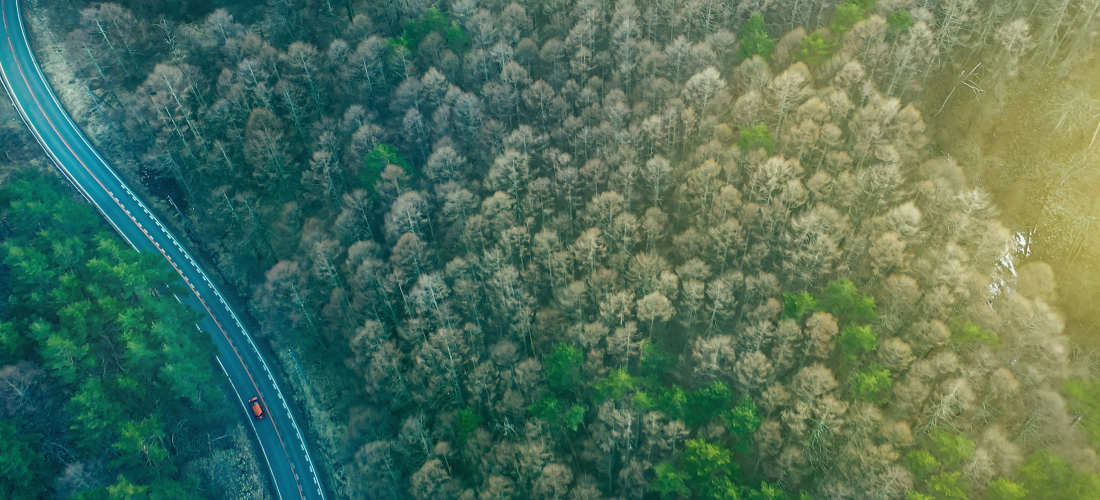
CONTENTS
This time, JAPANKURU hopped in a Nissan rent-a-car in Tokyo, and headed east towards Nagano.
On the way we saw the blush of sakura cherry blossoms, the blue of the warming sky, the snowy white of Mt. Fuji's peak, and the green of the lakes and mountains along the road.
Our trip was painted with all the colors of Japan's spring palette!
Iron Out the Rent-a-Car Details Before You Leave
Since we were starting from Tokyo, this time JAPANKURU used the Nissan Rent-a-Car Tokyo Station Yaesuguchi Branch. It's just a 3 to 5 minute walk south of Tokyo Station's Yaesu Exit, making it an easy trip over. It's definitely a convenient location if you're dragging around luggage. Even if you're starting your road trip in another part of Japan, though, Nissan's website lists clear information about what services are offered at each Nissan Rent-a-Car branch. On the Tokyo Station Yaesuguchi Branch's page, you'll see that it has ETC card rental available.
Tokyo Station Yaesuguchi Branch
Address: 2-5-4 Yaesu, Chuo-ku, Tokyo
Hours: 24/7
Phone: 03-3274-4501
Branch Info
Online Reservations
◆ Before you start planning your trip, remember: in Japan, cars drive on the left side of the road. (Learn more about why!) If you're from a country that drives on the right side, it's not too hard to get used to the switch, but it's a good idea to keep it in mind before you get on the road. Once you're confident in your left-side-of-the-road driving skills and you've determined your itinerary, confirm the following information and have all your documents ready before going to rent your car!
◆ For reservations:
□ Ready your passport.
□ Obtain an international driver's license. (More details on international permits for Americans, and some information from Nissan.)
□ Learn about what ETC (electronic toll collection) cards are for, and how to use them with Nissan Rent-a-Car.
□ Check in at the rental counter, and confirm your vehicle rental!
◆ Renting a car on site:
□ Find the perfect rental in their garage.
□ Pay with cash or credit card.
Starting Our Nissan Nagano Road Trip: The Fuji Shiba-sakura Festival
On our way to Nagano Prefecture, we stopped in for a lap of the Fuji Shiba-sakura Festival in Yamanashi!
In addition to wandering the shiba-sakura grounds and enjoying gourmet sweets, there's plenty else to do at the festival. If you want to admire the flowers from a new perspective, take a hot air balloon ride and view them from the air! Or relax and soak your feet in a foot bath while you look on at the flowers. If you're used to Yoshina sakura, Japan's most common cherry blossom variety, these new sakura will be a treat!
mo
The Fuji Shiba-sakura Festival 2019 (Annual Event)
Event Dates: April 13 ~ May 26
Address: 212 Motusu, Fujikawaguchiko, Minamitsuru Yamanashi
Admission Fee: Adults 600 yen/Children 250 yen
Official Website (en)
Driving Info
Parking: 2 lots available
Fee: compact vehicles 500 yen/larger vehicles 2,000 yen/motorbikes 300 yen
More in Yamanashi Prefecture
Did we get lost and find ourselves in the Alps? Wait, no, this pastoral wonderland is still Yamanashi!
Seisenryo is a natural retreat and resort area in Yamanashi Prefecture with hotels, restaurants… and farms! The surrounding scenery certainly makes for a relaxing spot, with breathtaking mountains around the compound and a view of Mt. Fuji in the distance.
Seisenryo was originally constructed as a Christian youth retreat center in 1938, but was rebuilt in 1957 with the current business model, open to the public. The retreat now specializes in delicious food made with fresh seasonal ingredients, many of which are purchased from the local farms. It's especially famous for the soft-serve ice cream made with milk from Jersey cows living in nearby ranches. Get a taste of this fresh and deliciously milky ice cream for 400 yen.
You can get the famous soft serve at the Seisenryo Jersey Hut. Within the hut is the Seisenryo Baker's Workshop, which sells freshly-baked bread, burgers, produce, and souvenirs. You can spend some time outside the shop on their 300 square meter (3230 sq ft) wooden deck, and savor the burgers and ice cream while you gaze at the mountain view.
Seisenryo
Address: 3545 Takanecho Kiyosato, Hokuto, Yamanashi
Jersey Hut Hours: 9:00 ~ 17:00
Seisenryo Official Website / Jersey Hut Official Website
Driving Info
Parking: 200 spots available
Fee: free!
The mountains that stretch between Nagano and Yamanashi Prefectures are called the Yatsugatake range. It's a popular area among mountain climbers in Japan, but this time we just admired their beauty from afar.
Our Next Destination: Takato Castle Site Park (高遠城址公園)
According to legend, these are the first sakura cherry blossoms in the world.
After seeing the moss phlox shiba-sakura of Yamanashi, we hope you've gotten a taste for less orthodox sakura viewing. This time, we're taking you to Takato Castle Site Park to enjoy night time sakura viewing.
This park is said to be one of the top three cherry blossom viewing spots in Japan each spring, and it holds an annual Takato Sakura Festival. Luckily, you can enter the park and enjoy the beautiful sakura during daylight hours, and also after sunset! A night visit gives you the perfect opportunity to see the beautifully lit blossoms reflected in the water under the bridge, a big contrast in comparison to the bright sun that shines onto the grounds during the day. Of course, if you end up at the Takato Castle Site Park during the winter, you won't be disappointed then, either. Snow blankets the park's maple trees and Japanese-style buildings, giving everything lots of winter charm.
Takato Castle Site Park
Address: Higashi Takato, Takatomachi, Ina, Nagano
Hours: 8:00 ~ 21:00
Admission Fee: Sakura Viewing Period – Adults 500 yen/Children 200 yen
(Free entrance at other times of year.)
Official Website / Takato Sakura Festival Website
Driving Info
Parking: available
Fee: compact vehicles 700 yen
Naraijuku
We wended our way through the roads once traversed by feudal lords of Japan, traveling between Tokyo and Kyoto.
During Japan's Edo Period, the "Five Routes" were the main arteries of the country. These five paths connected the capital, Edo (or modern-day Tokyo), to the rest of the country. These roads functioned not only as gateways for travelers, but also as the lifeblood of Japan's economy, with merchants taking advantage of the established routes. One of these routes was the Nakasendo (中山道 – literally central mountain route), which was commonly traveled by those going between the Tokyo area and Kyoto, Japan's ancient capital. Sometimes called the "Samurai Street", the ancient warriors supposedly walked the 550 km (340 mile) way in two weeks. Of course, since this was no quick trip, many towns sprouted up along the Five Routes as rest stops for travelers, usually called "stations" in English, or "shukuba" (宿場) in Japanese.
There are 69 stations along the Nakasendo Route, and one of the largest and most successful of these station towns was Naraijuku in Nagano. (The "juku" in Naraijuku (奈良井宿) and the "shuku" in "shukuba" (宿場) are actually the same Japanese word, meaning a place to stay! Just hearing the name can tell you about the town's origins.)
With so many visitors arriving since the Edo Era, the town has sometimes been called "Narai of 1,000 buildings" (Narai senken, or 奈良井千軒), and some of those old Edo buildings are still around! Naraijuku still bustles with same rest station spirit, and there are many hotels, restaurants, and small shops around town. If you really love the look of old Japanese buildings, with beautiful wood facades and carefully tiled roofs, this chunk of the Nakasendo path will make your heart sing.
We decided to stay in the Naraijuku guest house Ikariya Machida, which took us back in time with rooms that smelled pleasantly of the wooden floors, and with home-made traditional Japanese cuisine prepared by the facility's owner. After a night there, we could imagine how a similar stay might have erased the fatigue of Edo travelers, leaving them refreshed and ready for the rest of their trip along the Nakasendo.
Ikariya Machida Inn (いかりや町田民宿)
Address: 573-1 Narai, Shiojiri, Nagano
Official Website
Stay in the Neighborhood: Matsuyasabo Coffee Shop
As a rest stop, aside from traditional Japanese inns, of course Naraijuku has a (very) old-fashioned coffee shop! I mean, can you imagine going on a two-week trip without stopping even once for coffee? Matsuyasabo still keeps travelers going today, and it's the only coffee we drank on our road trip! The coffee shop is in an old two-story house built towards the end of the Edo Period. The first floor is a little more modern, and is set up as a western-style cafe, but the second floor has a Japanese-style room with tatami flooring, so you can plop down and enjoy your coffee or tea.
Matsuyasabo Coffee Shop
Address: 583 Narai, Shiojiri, Nagano
Hours: 9:00 ~ 17:00
Official Website
Naraijuku
Address: Narai, Shiojiri, Nagano
Official Website
Driving Info
Parking: available around the area.
Fee: both free and paid, see the official website for details.
Daio Wasabi Farm
Did you know that most of the wasabi eaten outside of Japan… isn't really wasabi? Your local sushi joint might do a reasonable job approximating the sinus-clearing flavor, but this farm has the real thing, and a lot of it!
Daio Wasabi Farm was established in 1917, giving it a history of more than 100 years. Covering an area of 15 hectares (more than 1.5 million square ft), it's the largest wasabi farm in Japan. Wasabi is rare outside of Japan because it's notoriously difficult to grow, but Daio Wasabi Farm clearly has the process down pat!
The farm is a wasabi wonderland, and lovers of the green stuff will rejoice in the 150 metric tons harvested annually. Aside from being a functional farm, Daio Wasabi Farm also provides wasabi snacks of all kinds, and of course wasabi souvenirs. Have you ever imagined wasabi as anything other than a tool for adding a little kick to your sushi? The on-site restaurant will open your mind and your sinuses to the many ways it can be eaten and thoroughly enjoyed.
If you're a fan of famous director Akira Kurosawa, don't miss this chance to visit the setting for the final segment of his 1990 film Dreams.
Daio Wasabi Farm
Address: 3640, Hotaka, Azumino, Nagano
Hours: 9:00 ~ 17:20 (Mar ~ Oct)/9:00 ~ 16:30 (Nov ~ Feb)
Admission: Free!
Official Website
Driving Info
Parking: 350 spots available
Fee: free!
The Hakuba Area
After our trip to the Daio Wasabi Farm, we took our Nissan Rent-a-Car into the Hakuba area of Nagano. Hakuba is known as a ski resort area, but even in the spring and summer the mountains are beautifully snow-capped.
Lake Kizaki
This popular resort lake is one of the "Nishina Three Lakes".
Close to Hakuba, the surrounding mountains reflect on the lake water, making the glassy surface look like an impressionist painting. When the weather gets nice in the spring and summer, it's a popular destination for visitors who want to spend time camping, hiking, or hanging out in and around the water. Take a kayak out into the middle of the peaceful lake, and then just lay back and relax.
Kizakiko Pow Wow Campsite & Outdoor Club
Address: 19004-1 Taira, Omachi, Nagano
Fee: See the website for prices.
Official Website
Driving Info
Parking: available
Fee: free!
Obinata no Yu Hot Spring
Is it truly a trip through Japan's countryside without a stop at a hot spring bath?
With Hakuba being a popular winter tourist destination, luxurious hot springs (or onsen in Japanese, 温泉) are a must! This one, called Obinata no Yu, flows right from a natural source, and includes an open-air bath surrounded by the mountainous scenery. It's beautiful year-round, but in winter the snow piles up outside while the hot water keeps you warm and cozy. We had to take a break here before hitting the road again!
Obinata no Yu
Address: 9346-1 Hokujo, Hakuba-mura, Kitaazumi, Nagano
Fee: Adults 600 yen/Children 300 yen (Bring toiletries and towels, or rent them for an extra fee.)
Hours: 9:00 ~ 18:00 (summer)/19:00 ~ 17:00 (winter)
Website
Driving Info
Parking: 20 spots available
Fee: free!
Mountain Side Hakuba
While in Hakuba, we stayed in an apartment-style hotel right up against one of the many mountains.
Hakuba doesn't offer quite the same "step outside and you're there" convenience as a big city, so it's a great place to choose a hotel with apartment-style suites. We chose to visit Mountain Side Hakuba, a fresh new hotel that finished construction in just January 2017. Each of the suites comes with a complete living room and kitchen, along with bedrooms and baths. We got to take a trip to the supermarket together, cook up dinner, and have ourselves a dinner party. Why not give it a try with your friends and family next time you're in Hakuba?
Mountain Side Hakuba
Address: 4313-1 Hokujo Hakuba, Kita Azumi-gun, Nagano
Official Website/Reservation Page
Driving Info
Parking: available
Fee: free!
Ueda
Thanks to NHK historical drama Sanada Maru, the city of Ueda was brought back to the time of warriors, and to the forefront of Japanese minds.
The Hokkoku Kaido Highway’s Historic Yanagimachi Street
We already stopped in at Naraijuku, a historic remnant of the Edo Period's Five Routes, so we thought we'd take a look at what some of the other main roads of Japan's past were like. Slightly less enormous in its importance, but still widely traveled, was the Hokkoku Kaido highway running the width of Japan.
While travelers utilizing the Nakasendo, and the other Five Routes, were strictly inspected, the Hokkoku Kaido road was available for much freer use. Because of this, the road was crowded with the average citizens of Edo Japan, relied upon by many for everyday uses. Of course, this was no short path, and towns popped up along the Hokkoku Kaido to provide travelers with rest and refreshment, just like the more major roads. One of these rest stations with bits of the old town remaining is Yanagimachi in Ueda City, where many of the old shops and inns are still functioning buildings. Walk down the street these days and you'll find shops selling traditional snacks, souvenirs, and restaurants filling the air with the savory and sweets smells of the Edo Era.
Ueda Castle Park
A site good for history buffs and sakura lovers!
Ten to fifteen minutes walk from Yanagimachi's historic street is the Ueda Castle Park. This castle was originally built by the area's Sanada clan, which is indeed the same Sanada as in the popular NHK drama made in the area. The castle and the Sanada clan managed the impressive feat of forcing Tokugawa's army to retreat, not just once, but twice keeping a much larger and more powerful military at bay. Nowadays, the remnants of that powerful keep are just barely hanging on, but the park is still a rejuvenating visit. On the grounds is the Sanada Shrine (真田神社), a popular destination for students praying they pass their exams. And during the spring, blooming cherry blossoms cascade down the banks of the moat and around the park.
If you want to learn more about local history, check here for events on the theme. Watch history come to life in these entertaining performances.
Ueda Castle Park
Address: 2 Ninomaru, Ueda, Nagano
Fee: Adults 300 yen/High School Students 200 yen/Elementary School Students 100 yen
Official Website
Driving Info
Parking: available at the Ueda Castle Station lot and Ueda Castle Hokkoku Tourism lot
Fee: free for a limited period, details available here.
More to See
Thanks for coming along on our road trip to Nagano, everybody! These were our favorite stops on the way, but if you want to take a similar trip and you love packing days full to bursting with things to do, here are a couple more places you can check out.
We've explored some of the breathtaking nature of Japan's Kyushu Island in the south.
We ate cow tongue and met the friendly foxes of Japan's northern region, Tohoku.
And we once went on three little trips around the country!
PROFILE
Follow us @Japankuru on Facebook, Instagram, and Twitter!
COMMENT
FEATURED MEDIA
VIEW MORE
Narita Airport Tax-Free Shopping List 나리타공항 면세점 쇼핑 리스트 #pr #calbee #jagapokkuru #japanesesnacks #japanesefood #japanesesouvenir #japantravel #japantrip #naritaairport #hokkaido #나리타국제공항 #나리타공항면세점 #나리타공항면세점과자 #일본공항면세점 #일본기념품쇼핑리스트추천 #공항면세점쇼핑리스트 #일본과자추천 #면세점일본과자 #일본기념품추천 #일본과자 #자가폿쿠루 #일본간식 #일본과자쇼핑 #일본면세점필수템 #일본기념품쇼핑

Asakusa's Sanja Matsuri, one of the biggest festivals in all of Tokyo, is almost here! Make sure you check out the festival route so you don't miss all the festivities this May. #asakusa #sanjafestival #sanjamatsuri #asakusashrine #sensoji #sensojitemple #japanesefestival #shintoshrine #japaneseculture #tokyo #tokyotrip #tokyotravel #asakusasightseeing #matsuri #japantrip #japantravel #springinjapan #tokyotravel #japankuru #산자마츠리 #아사쿠사 #일본마츠리 #일본여행 #일본5월

Odaiba's DiverCity Tokyo Plaza is home to the famous real-size 20m-tall Unicorn Gundam, and the popular shopping center has even more Gundam on the inside! Check out the Gundam Base Tokyo on the 7th floor for shelves upon shelves of Gunpla, and the Gundam Base Tokyo Annex on the 2nd floor for cool anime merchandise. Both shops have tons of limited-edition items! #pr #odaiba #tokyo #tokyotrip #japantrip #japantravel #PR #divercity #divercitytokyoplaza #tokyoshopping #gundam #unicorngundam #gundambasetokyo #anime #otaku #gunpla #japankuru #오다이바 #다이바시티도쿄 #오다이바건담 #건담 #일본건담 #건프라 #건담베이스도쿄

Evangelion, in miniature!? Tokyo's SMALL WORLDS Miniature Museum is actually a must-see for anime lovers, thanks to the tiny Evangelion Hangar and Tokyo-III... plus a whole universe of other scenes both real and fictional. #smallworlds #smallworldstokyo #tokyotrip #tokyotravel #evangelion #eva #anime #miniature #miniatures #animefigure #japantrip #japantravel #에반게리온 #스몰월드 #에반겔리온 #スモールワールズ #오다이바 #아리아케

Have you sat down for a snack at Sumida Aquarium yet? This aquarium next to Tokyo Skytree is known for its penguins and garden eels, but we can't get enough of their cute snacks! There are lots of good seats around the aquarium, too, so it almost feels like one big cafe. 🐧 • Find out more at Japankuru.com! (Link in bio.) • #japankuru #sumidaaquarium #skytree #tokyoskytree #solamachi #sumida #tokyo #tokyotrip #tokyotravel #aquarium #japanesesweets #themecafe #すみだ水族館 #Japan #日本 #일본 #Japon #ญี่ปุ่น #Japão #япония #japantravel #日本旅行 #日本旅遊 #japan_of_insta #japantrip #traveljapan #japan🇯🇵 #igerstokyo #explorejapan

For anime fans, the Evangelion areas at Small Worlds Miniature Museum are a must see! The tiny miniature people in the Evangelion Hangar look like ants beneath the moving Unit-01, Unit-00, and Unit-02! And over in Tokyo-III, characters like Shinji, Rei, and Katsuragi live life on a miniature scale. #odaiba #tokyo #tokyotrip #japantrip #japantravel #ariake #smallworlds #miniaturemuseum #smallworldstokyo #tokyotravel #evangelion #eva #anime #miniature #miniatures #animefigure #japankuru #스몰월드 #에반게리온 #오다이바 #오다이바관광 #오다이바스몰월드 #미니어쳐



